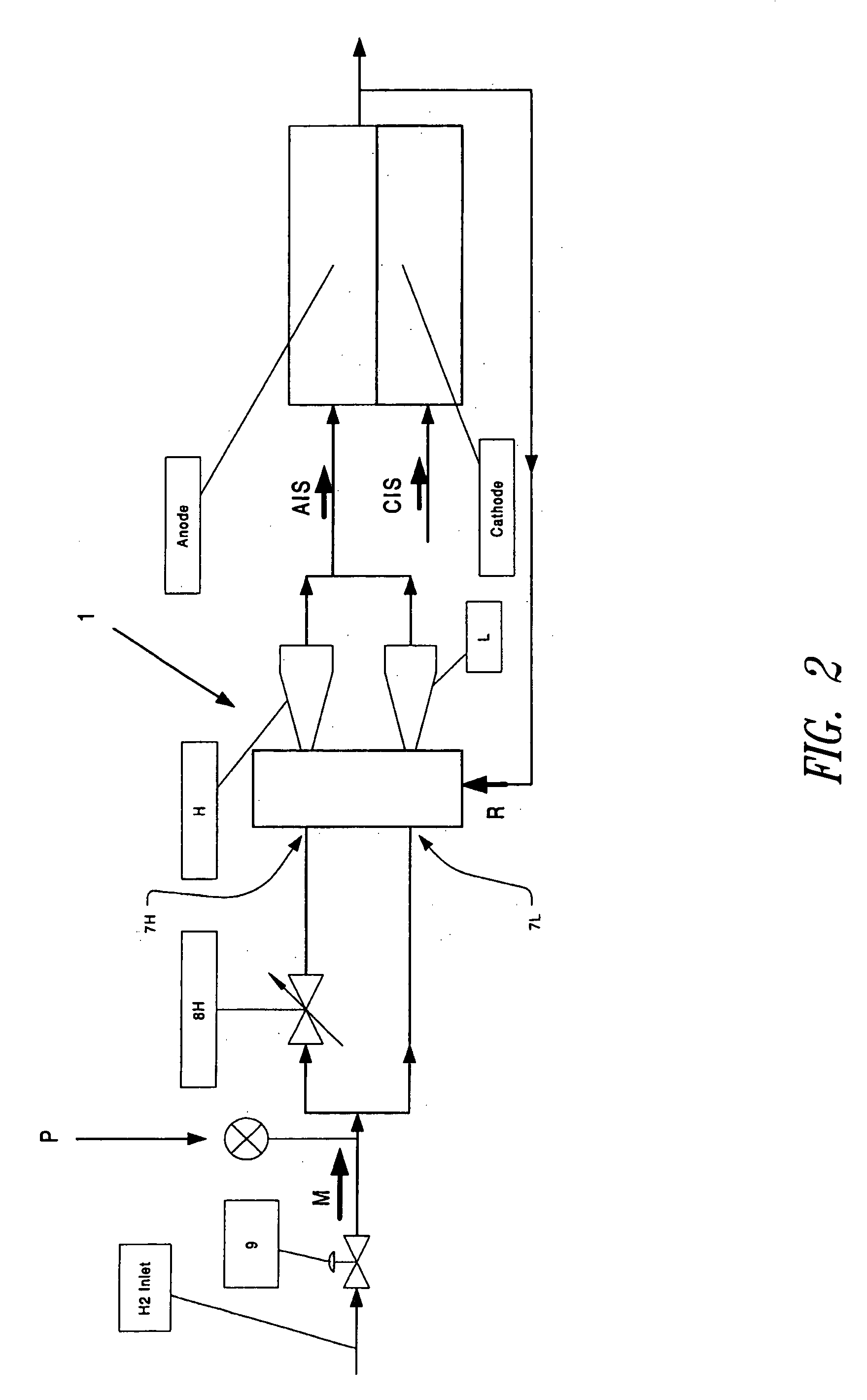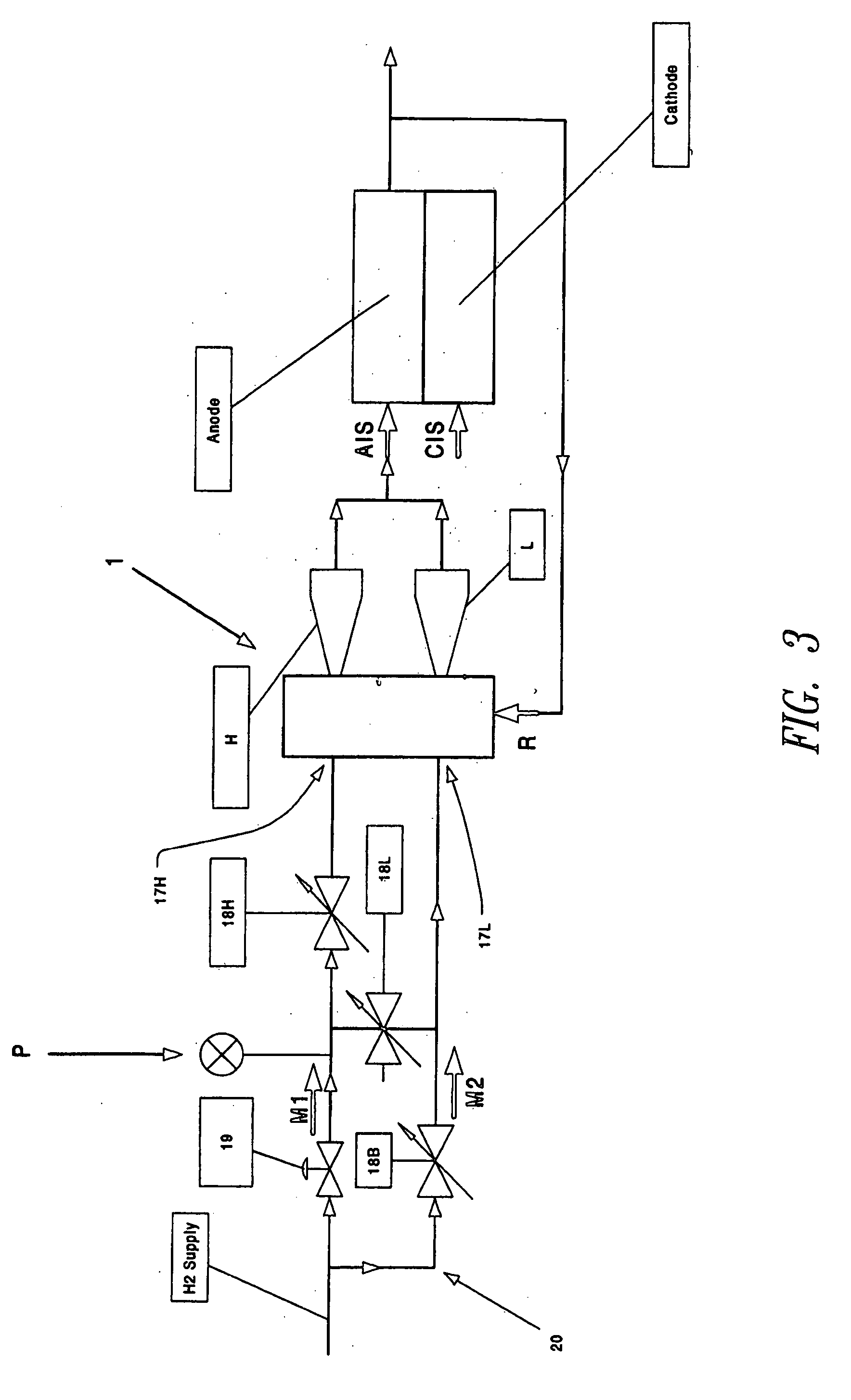Fuel cell system with fluid stream recirculation
a fuel cell and fluid stream technology, applied in the field of fuel cell systems, can solve the problems of insufficient design of jet ejectors, insufficient fuel cell stack inlet flow rate, and insufficient nozzle and/or throat portion of diffusers,
- Summary
- Abstract
- Description
- Claims
- Application Information
AI Technical Summary
Benefits of technology
Problems solved by technology
Method used
Image
Examples
Embodiment Construction
[0091]FIG. 1 shows a double jet ejector 1 according to an embodiment of the invention. Jet ejector 1 includes a common suction chamber 2, a low-flow nozzle 3L and a low-flow diffuser 4L (which, for the sake of simplicity, will collectively be referred to below as low-flow ejector L), a low-flow check valve 5L, a high-flow nozzle 3H and a high-flow diffuser 4H (which, for the sake of simplicity, will collectively be referred to below as high-flow ejector H), a high-flow check valve 5H, a suction inlet 6, fluidly connected to common suction chamber 2, a low-flow motive inlet 7L, fluidly connected to low-flow nozzle 3L, a high-flow motive inlet 7H, fluidly connected to high-flow nozzle 3H, and a discharge outlet 8, fluidly connected to low-flow and high-flow diffusers 4L and 4H. Suction inlet 6 is configured to receive a recirculated flow R from a fuel cell stack's exhaust stream outlet, low-flow motive inlet 7L and high-flow motive inlet 7H are configured to receive a motive flow M fr...
PUM
| Property | Measurement | Unit |
|---|---|---|
| steady-state pressure | aaaaa | aaaaa |
| steady-state pressure | aaaaa | aaaaa |
| pressure | aaaaa | aaaaa |
Abstract
Description
Claims
Application Information
 Login to View More
Login to View More - R&D
- Intellectual Property
- Life Sciences
- Materials
- Tech Scout
- Unparalleled Data Quality
- Higher Quality Content
- 60% Fewer Hallucinations
Browse by: Latest US Patents, China's latest patents, Technical Efficacy Thesaurus, Application Domain, Technology Topic, Popular Technical Reports.
© 2025 PatSnap. All rights reserved.Legal|Privacy policy|Modern Slavery Act Transparency Statement|Sitemap|About US| Contact US: help@patsnap.com



